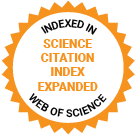Journal of Medical Internet Research
The leading peer-reviewed journal for digital medicine and health and health care in the internet age.
Editor-in-Chief:
Gunther Eysenbach, MD, MPH, FACMI, Founding Editor and Publisher; Adjunct Professor, School of Health Information Science, University of Victoria, Canada
Impact Factor 5.8 CiteScore 14.4
Recent Articles

Generative artificial intelligence (GenAI) systems like Anthropic's Claude and OpenAI’s ChatGPT are rapidly being adopted in various sectors, including healthcare, offering potential benefits for clinical support, administrative efficiency, and patient information access. However, real-world adoption patterns and the extent to which GenAI is used for healthcare-related tasks remain poorly understood, distinct from performance benchmarks in controlled settings. Understanding these organic usage patterns is key for assessing GenAI's impact on healthcare delivery and patient-provider dynamics.

Digital health technology adoption has accelerated in respiratory care, particularly since the COVID-19 pandemic, supporting various applications from self-management to telerehabilitation. While these technologies have transformed health care delivery, their impact on the patient-provider relationship in specialist respiratory care remains poorly understood.

Pediatric clinical research, especially in rare diseases, faces persistent challenges including the identification and recruitment of eligible patients, assessing protocol feasibility, and ensuring efficient trial execution. These issues are compounded by small, age-stratified populations and fragmented clinical data. Real-world data (RWD), especially when drawn from electronic health records (EHRs), present an opportunity to support innovative trial designs, such as real-world comparator arms and postmarketing surveillance. However, realizing this potential depends on the routine availability of structured, reusable clinical data.

Digital health behavior change interventions play an important role in helping cancer survivors improve their quality of life and reduce the risk of cancer recurrence. Clinician-patient communication is central to promoting the uptake of and adherence to digital health behavior change interventions. However, oncologists face significant barriers, including time constraints, knowledge gaps, and conversational uneasiness that limit risk behavior and health behavior change conversations.


Daily preferences are a reflection of how adults wish to have their needs and values addressed, contributing to joy and satisfaction in their daily lives. Clinical settings often regard older adults as a uniform group, neglecting the diversity within this population, which results in a shortfall of person-centered care that overlooks their distinct daily care preferences. At the heart of person-centered care lies the imperative to comprehend and integrate these preferences into the care process. Recognizing and addressing gender differences in older adults is critical to customizing care plans, thereby optimizing quality of life and well-being for individuals. This study addresses the need to understand the diverse daily care preferences of adults, particularly among older populations, who represent a growing demographic with unique needs and interests.

Over the last 25 years, digital health interventions in low- and middle-income countries have undergone substantial transformations propelled by technological advancements, increased internet accessibility, and a deeper appreciation of the benefits of digital tools in enhancing health care availability.

Climate change, driven by greenhouse gas emissions, threatens human health and biodiversity. While the digitalization of health care, including telemedicine and artificial intelligence, offers sustainability benefits, it also raises concerns about energy use and electronic waste. Balancing these factors is key to a sustainable health care future.

The integration of artificial intelligence (AI) holds substantial potential to alter diagnostics and treatment in health care settings. However, public attitudes toward AI, including trust and risk perception, are key to its ethical and effective adoption. Despite growing interest, empirical research on the factors shaping public support for AI in health care (particularly in large-scale, representative contexts) remains limited.

Human Papillomavirus (HPV) is a leading cause of cervical cancer. It has a significant impact on global public health, with low- and middle-income countries, including India, facing the highest burden. In 2022, India reported 127,526 new cases and 79,906 deaths due to cervical cancer, projected to increase by 61% by 2040. Although the National Technical Advisory Group on Immunization (NTAGI) recommended the HPV vaccine for cervical cancer prevention, it is yet to be a part of India's universal immunization program.

Digital therapeutics (DTx) are software-driven interventions that provide personalized, evidence-based treatments for various medical conditions. China’s rapid technological adoption, large population, and supportive government policies position it as a potential global leader in DTx. However, challenges remain in clinical trial standardization, regulatory approval, product development, and reimbursement models. A comprehensive assessment of clinical evidence, commercialization trends, and regulatory frameworks is essential for understanding China’s evolving DTx ecosystem and its global implications.
Preprints Open for Peer-Review
Open Peer Review Period:
-
Open Peer Review Period:
-
Open Peer Review Period:
-

















